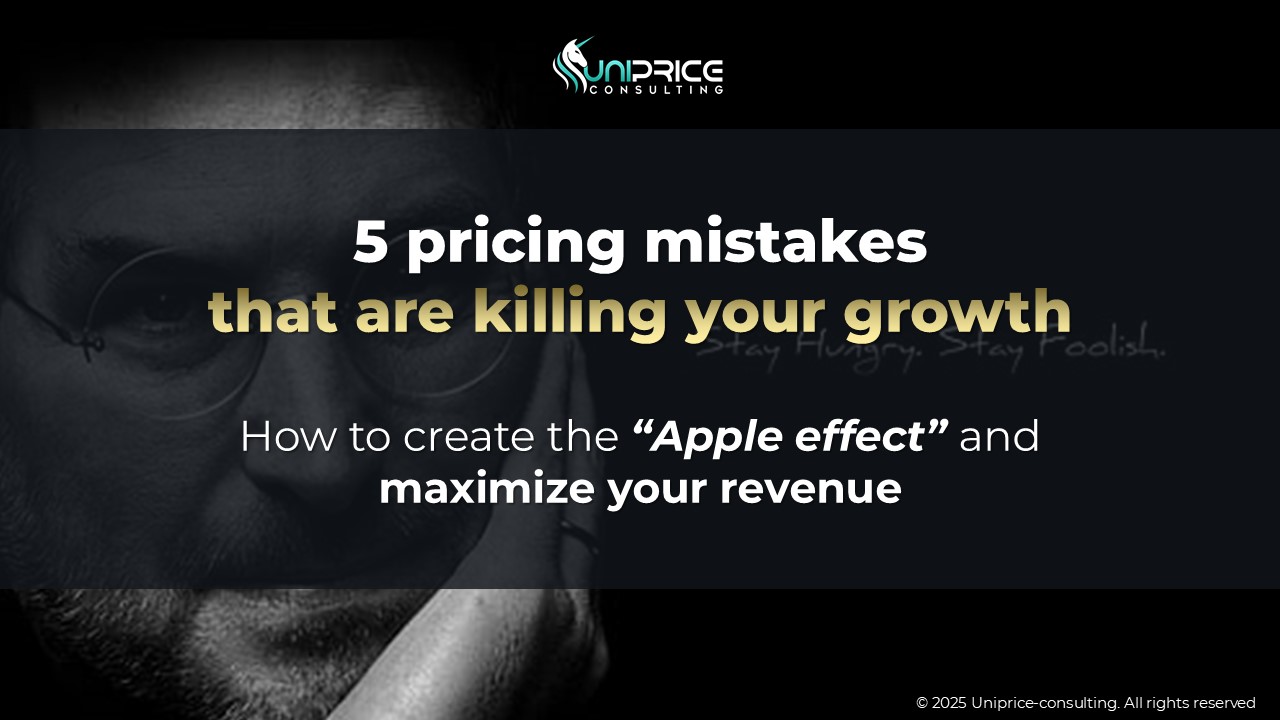In the realm of SaaS and tech industries, pricing doesn’t simply determine revenue; it mirrors the value of the product, its market position, and its relevance to consumers. Market leaders recognize pricing as an essential component of a product’s success and its innovation strategy. In this article, we share three key insights from our experience and the industry’s best practices to guide SaaS and tech companies in their pricing efforts:
- Make pricing a part of development, not an afterthought:
Traditionally, pricing strategies were formulated post-product creation. This after-the-fact approach might be suitable for some industries, but for tech and SaaS – where the market is volatile and competition fierce, this strategy is outdated. Top management should advocate for incorporating pricing into the product development process. By doing so, companies can align product features, benefits, and the overall value proposition with what customers truly value and are willing to pay for.
- Scientifically assess the customers’ willingness to pay.
Every consumer has a threshold, a point beyond which they believe a product is no longer worth its price. Before hitting this threshold, there’s a range where your customers perceive the product’s value as equivalent or even superior to its price. For SaaS companies, the challenge is finding this equilibrium. It’s therefore key to invest in research to gauge willingness-to-pay thresholds and their distribution across various customer types. This might also entail studying how your target interacts with comparable products and understanding the primary problems your product addresses.
- Adopt a differentiated pricing approach.
It might be tempting to standardize pricing into a single bracket for all users, but the diverse needs of clients make this approach inadequate. A one-size-fits-all pricing model can deter potential users who might find better-suited features (and prices) with competitors. To avoid this pitfall, embrace differentiated pricing strategies. This doesn’t necessarily mean complicating the structure but offering tiers or packages tailored to different customer segments, each reflecting the features and benefits provided.
Once your pricing strategy is articulated, its execution hinges on three ongoing principles:
Stay customer-focused: It’s imperative to ensure a pricing strategy centred on the customer’s value perception. Make it a point to systematically gather feedback from customers and prospects, conduct surveys, and perform user tests to inform your price-related discussions and decisions. Understand the issues your solution addresses, its limitations, and update your offering’s value in relation to the ever-evolving needs of the client.
Always think “Value Delivered” then “Price Charged”: Value-based pricing is widely acknowledged as the optimal monetization approach, even in a commodity market. With products constantly evolving due to feature enhancements or the launch of new services and functionalities, you must continuously evaluate the value you deliver to your customers. If your software enables a company to save thousands of euros in operational costs, it warrants a premium price.
Test and adjust: pricing is not one-time work, the tech sector is characterized by rapid change. Strategies that are effective today might falter tomorrow. This underscores the importance of agility in pricing strategies. Use A/B testing, seasonal pricing reviews, and competitor price analyses to ensure your pricing model remains optimal.
In conclusion, the right pricing strategy can propel a product to success, while a misaligned one can stifle its potential. Pricing isn’t just a number – it’s a tool, a strategy, and most importantly, a reflection of value. For SaaS and tech companies, mastering this tool is vital to ensure long-term success and innovation in an ever-shifting market.
At Uniprice, we assist you in optimizing your pricing strategy, offering our expertise and proven methodology. If you’d like to learn more about our services, feel free to contact us directly.
Lyas Driad
CEO








